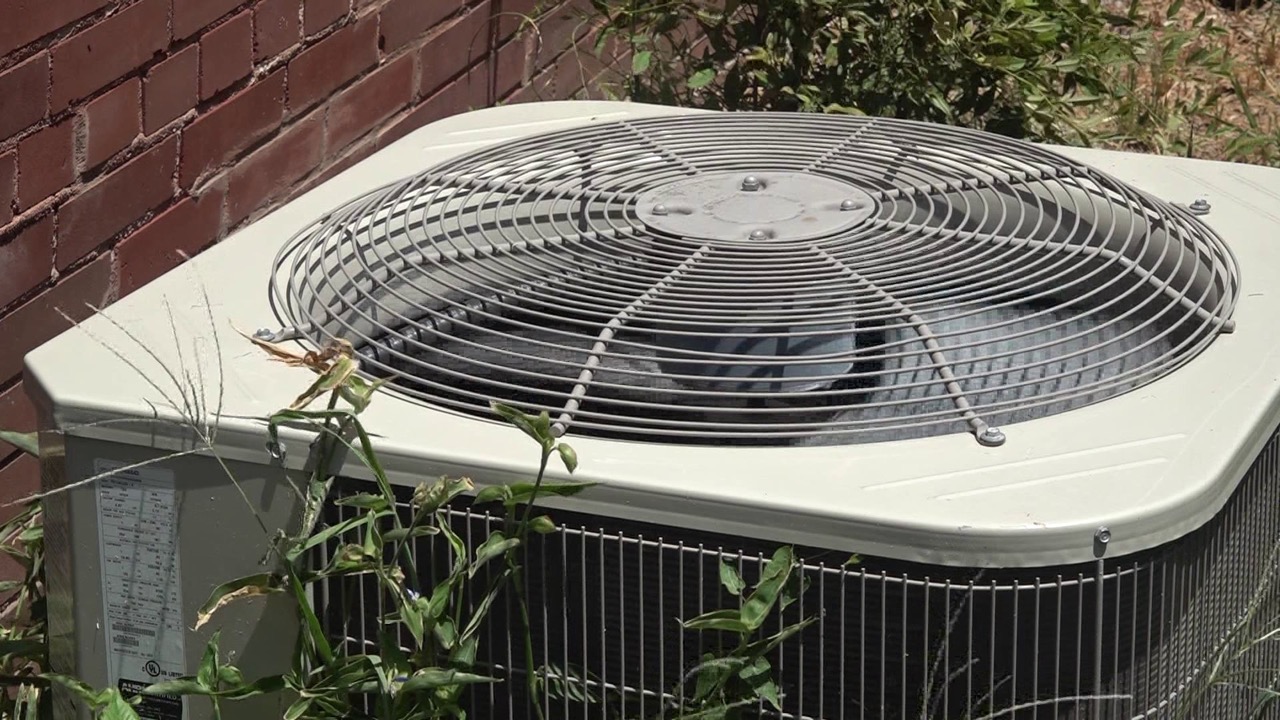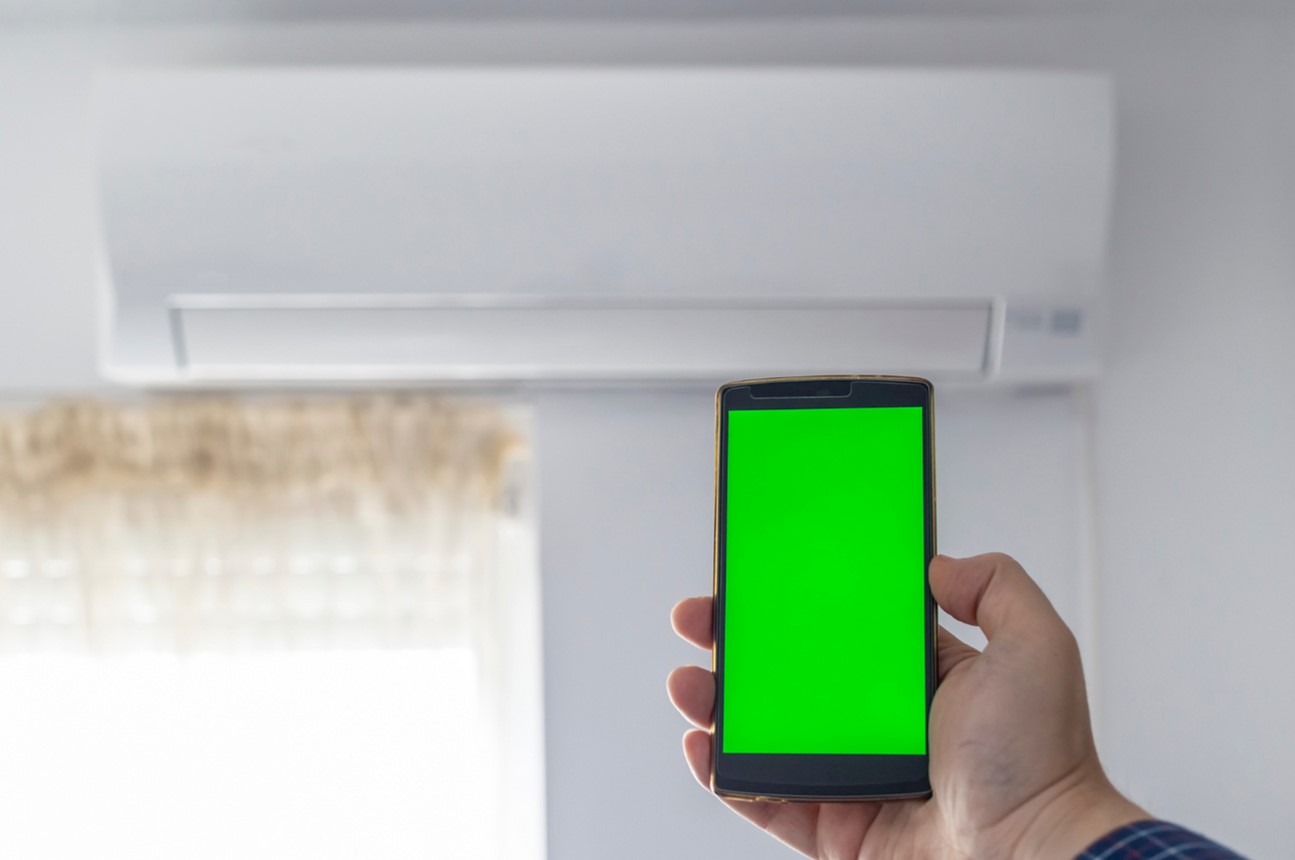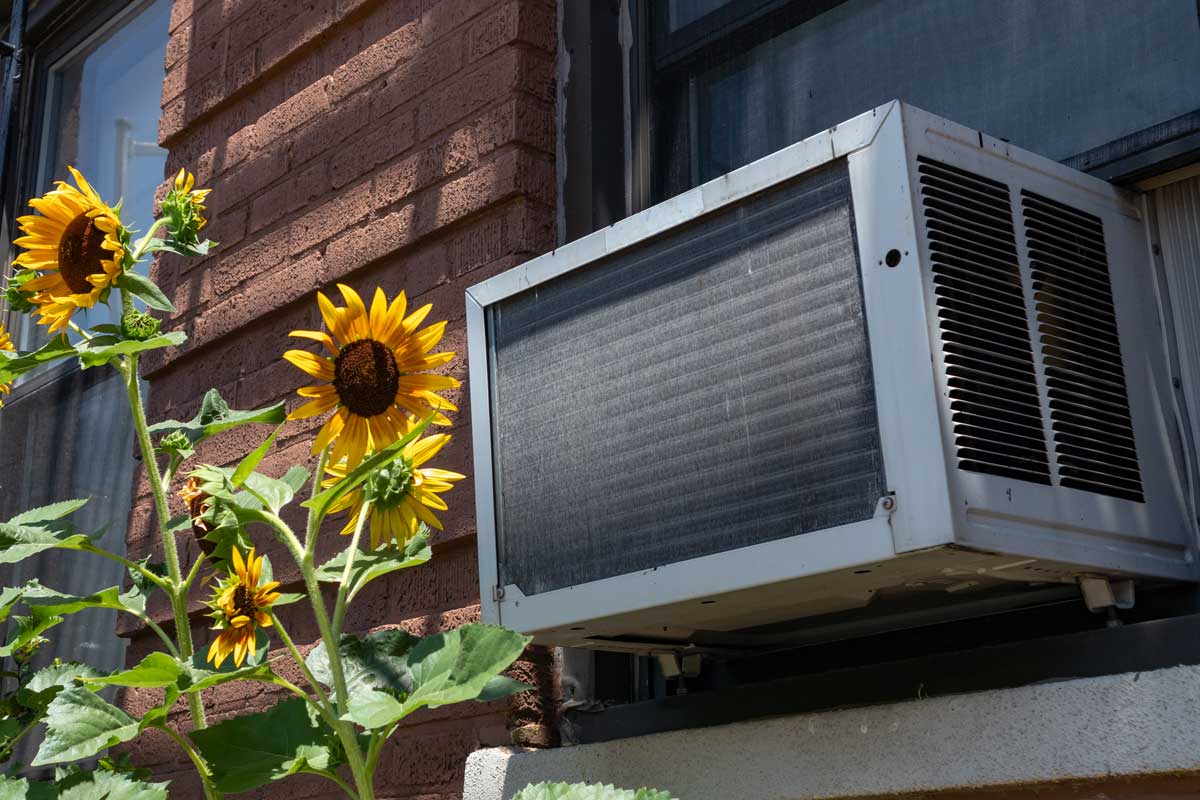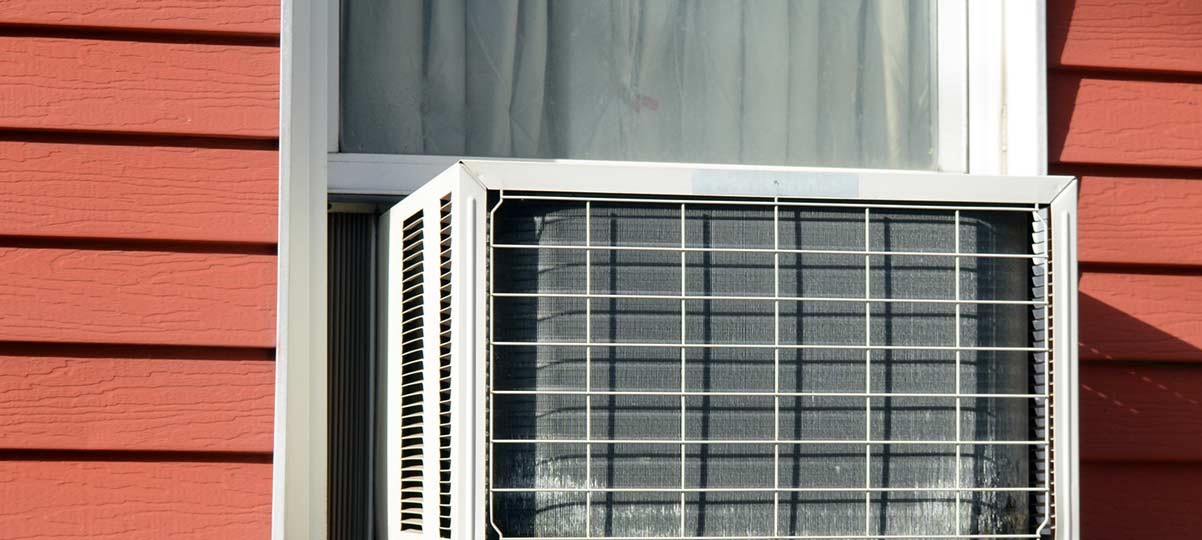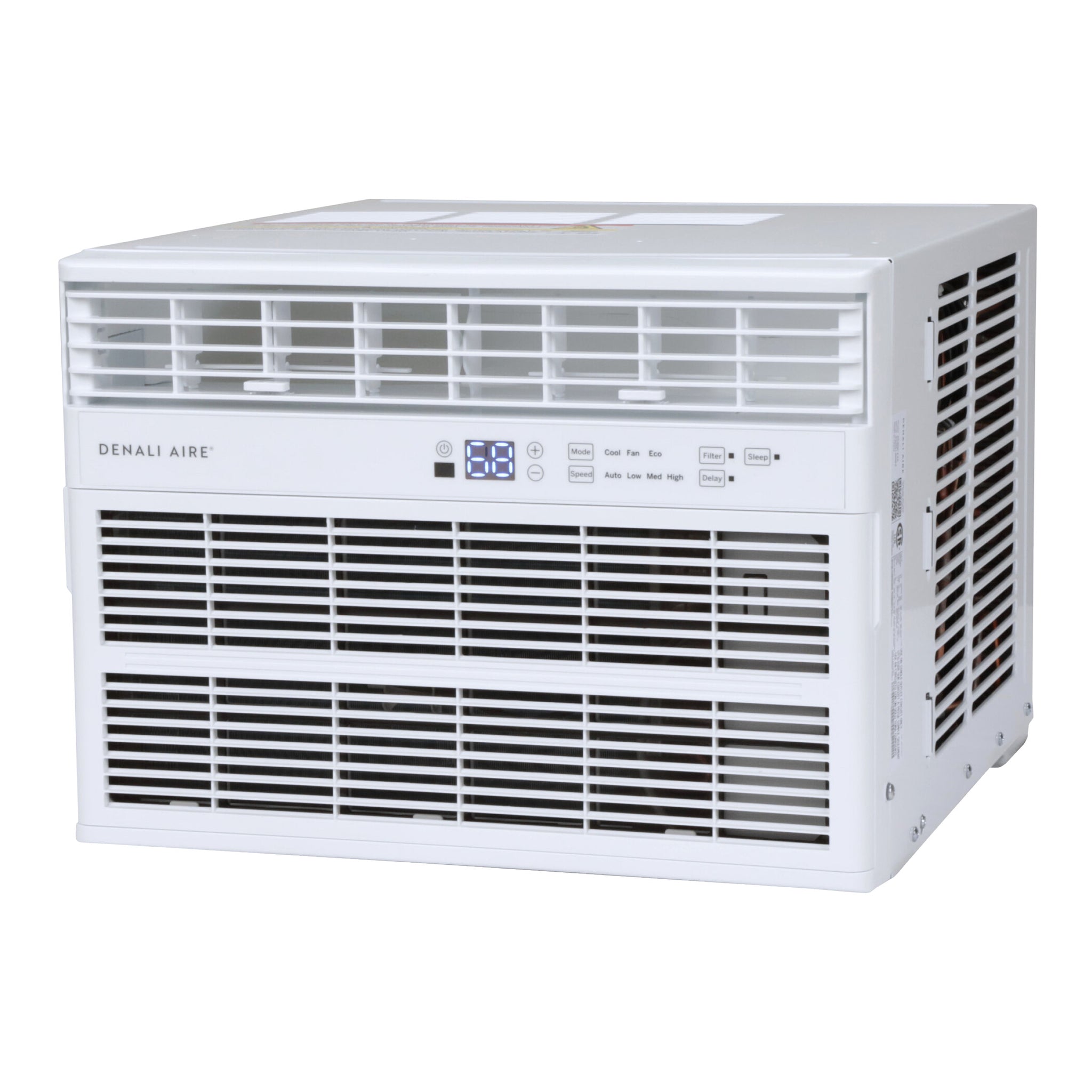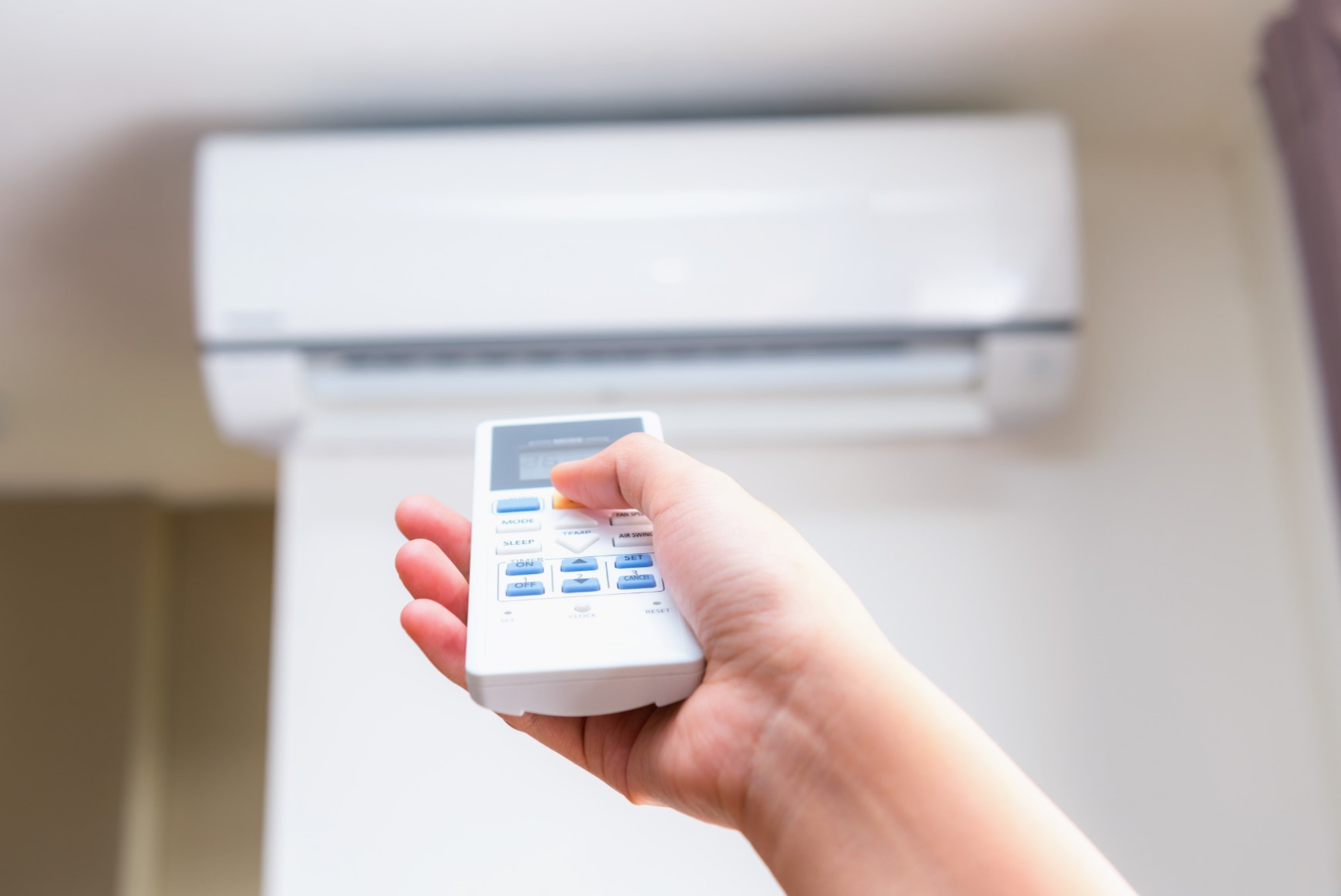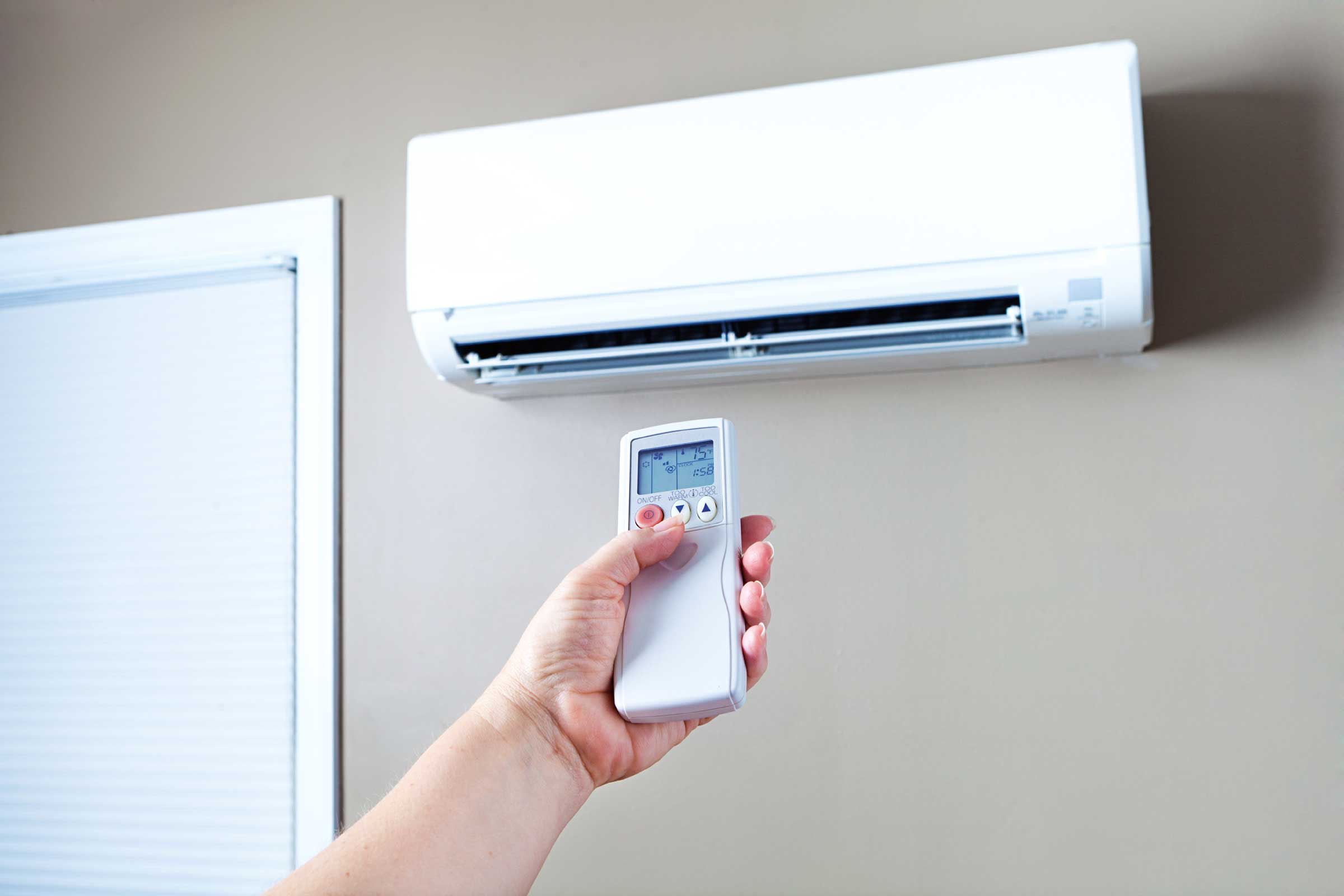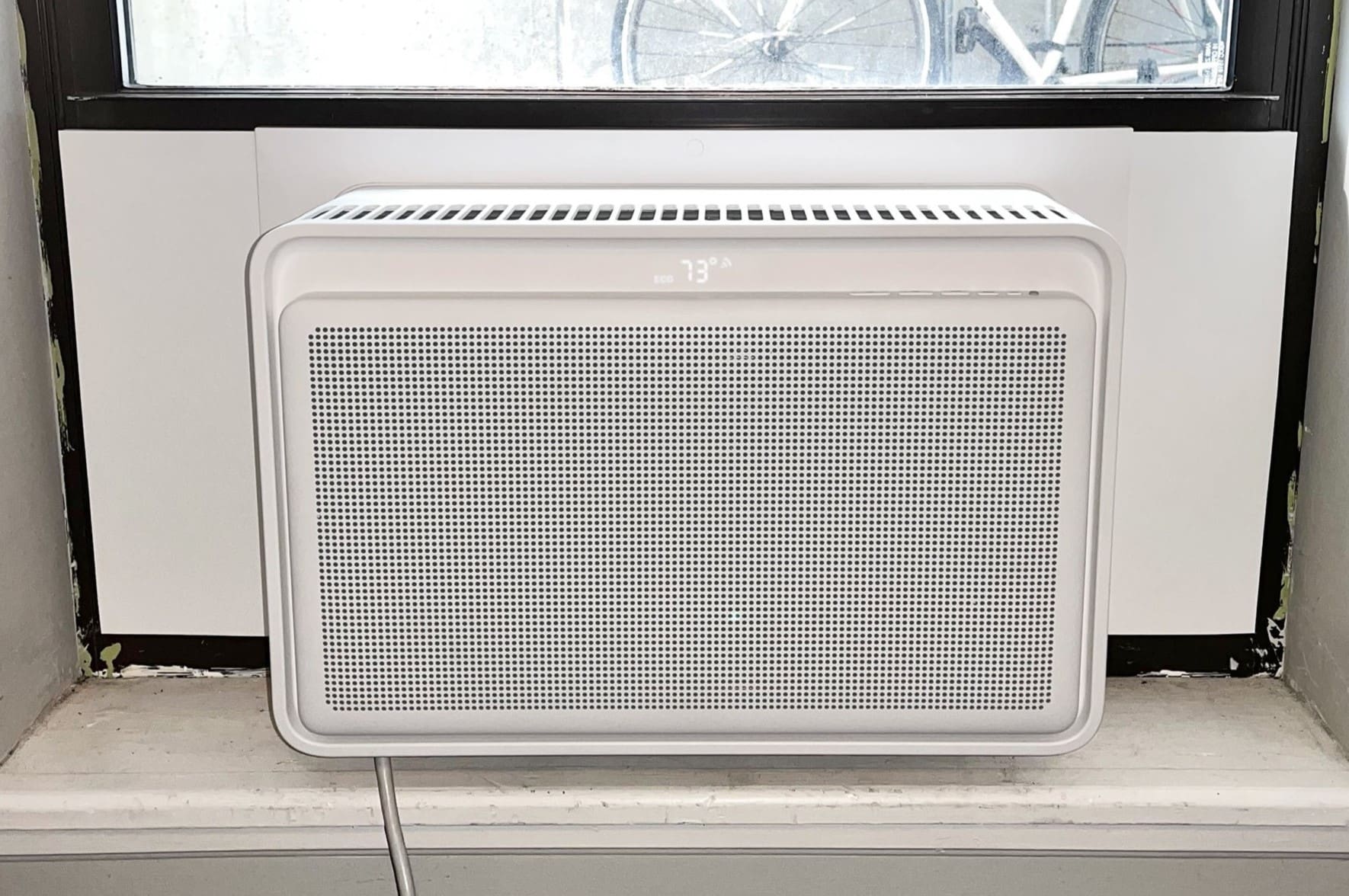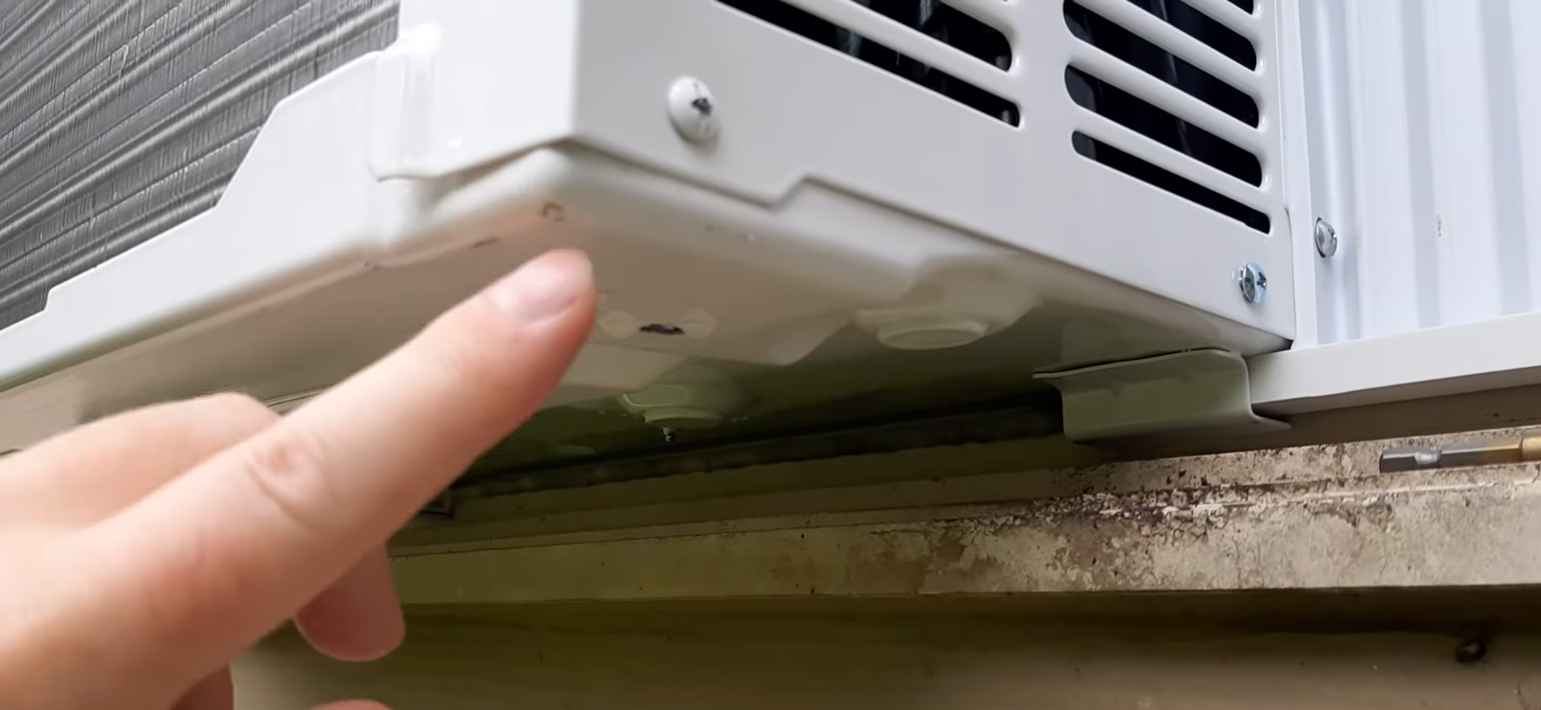Home>Home Maintenance>Window Air Conditioner Still Running When Turned Off
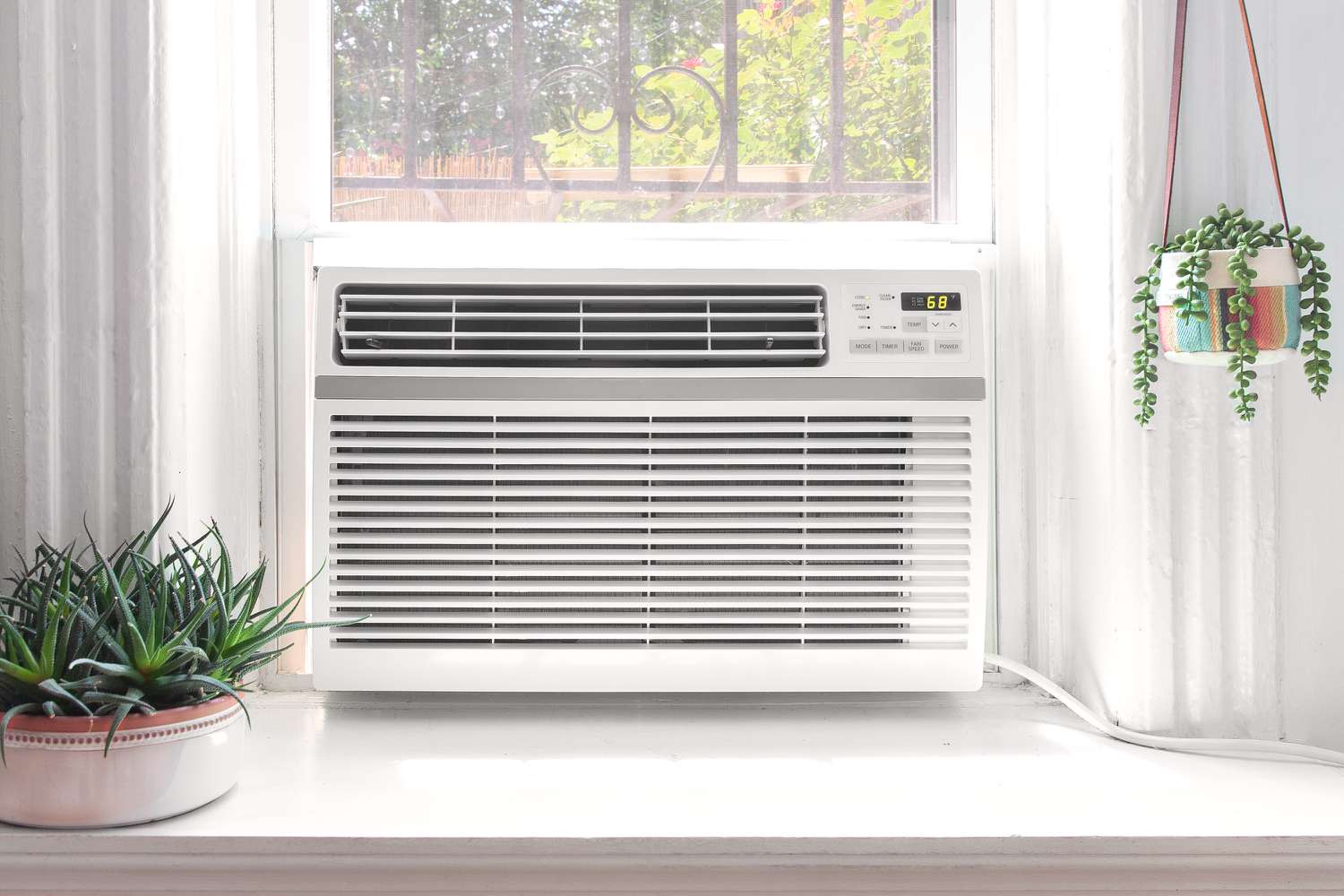

Home Maintenance
Window Air Conditioner Still Running When Turned Off
Modified: August 27, 2024
Discover why your window air conditioner is still running even when it's turned off. Get expert tips on home maintenance to fix this issue and keep your cooling system running efficiently.
(Many of the links in this article redirect to a specific reviewed product. Your purchase of these products through affiliate links helps to generate commission for Storables.com, at no extra cost. Learn more)
Introduction
Having a window air conditioner can provide significant relief during hot summer days. It allows you to create a cool and comfortable environment in your home. However, what happens when your window air conditioner continues to run even after you have turned it off? This can be a frustrating and confusing situation to deal with. Understanding the possible causes behind this issue can help you troubleshoot and resolve the problem.
There are several potential factors that could contribute to your window air conditioner still running when it is supposed to be turned off. These can range from a faulty thermostat or electrical issue to a stuck relay switch or malfunctioning control board. It is important to identify the root cause, as it will determine the appropriate solution.
In this article, we will explore each of these potential causes in detail and provide step-by-step troubleshooting tips to help you resolve the issue. Whether you are a DIY enthusiast or simply want to gain a better understanding of why your window air conditioner is behaving unexpectedly, this guide will equip you with the knowledge you need to tackle the problem.
Key Takeaways:
- Don’t panic if your window air conditioner keeps running when turned off. It could be due to a simple residual cooling effect, which is normal and helps circulate remaining cool air after turning off the AC function.
- Always check the thermostat setting and inspect the electrical connection to troubleshoot a running window air conditioner. It’s important to ensure the unit is turned off and unplugged before conducting any inspections or maintenance.
Possible Causes
When your window air conditioner continues to run when it’s turned off, there could be various underlying causes. Let’s look at some of the most common factors that can contribute to this issue:
- Faulty Thermostat: The thermostat serves as the control center for your air conditioner, regulating the temperature and signaling the unit to turn on or off. A malfunctioning thermostat may not accurately detect the desired temperature, causing the unit to continue running even when you have set it to “off.”
- Electrical Issue: Electrical problems, such as a short circuit or faulty wiring, can disrupt the normal functioning of your window air conditioner. If the electrical connection is not properly established, it can prevent the unit from receiving the signal to shut off.
- Stuck Relay Switch: A relay switch is responsible for controlling the flow of electricity within the air conditioner. If the relay switch becomes stuck in the “on” position, it can keep the unit running even when you have turned it off.
- Malfunctioning Control Board: The control board acts as the brain of your air conditioner, interpreting signals from the thermostat and other components to initiate the appropriate action. If the control board becomes defective, it may continue to send signals to keep the unit running despite being turned off.
- Residual Cooling Effect: Some air conditioners have a built-in feature called “fan-only mode” or “economy mode.” When you turn off the air conditioning function, the fan may still continue to run to help circulate the cool air that remains inside the unit. This can give the impression that the air conditioner is still running when it is actually just the fan running.
By understanding these potential causes, you can now proceed to troubleshoot and determine the specific issue with your window air conditioner. In the following sections, we will outline the steps you can take to address each of these causes and resolve the problem once and for all.
Faulty Thermostat
A faulty thermostat can be one of the main culprits behind a window air conditioner that continues to run when it’s turned off. The thermostat is responsible for sensing the temperature in the room and signaling the air conditioner to turn on or off to maintain the desired temperature. If the thermostat malfunctions, it may not accurately detect the temperature, leading the air conditioner to keep running even when you have set it to “off.”
To troubleshoot and address a faulty thermostat, follow these steps:
- Double-check the thermostat setting: Ensure that the thermostat is set to the “off” position. Sometimes, the switch may be accidentally set to a different mode or temperature setting, causing the air conditioner to continue running. Verify that the thermostat is correctly positioned and set to the desired setting.
- Inspect the thermostat for damage: Examine the thermostat for any visible physical damage, such as cracks, loose wires, or signs of water damage. If you notice any such issues, it is likely that the thermostat needs to be replaced. Consult the manufacturer’s instructions or contact a professional technician to safely replace the faulty thermostat.
- Calibrate the thermostat: In some cases, the thermostat may require calibration to accurately detect the temperature. Refer to the user manual or manufacturer’s instructions to learn how to calibrate the thermostat. Follow the steps carefully to ensure proper calibration.
- Reset the thermostat: If the thermostat appears to be functioning improperly, try resetting it. This can help to clear any temporary glitches or errors that may be affecting its performance. Refer to the user manual or manufacturer’s instructions to learn how to reset the thermostat properly.
- Consider professional assistance: If you have followed the above steps and the issue persists, it may be best to consult a professional technician. They can diagnose the problem more accurately and provide the necessary repairs or replacement parts to fix the faulty thermostat.
Addressing a faulty thermostat is essential to ensure the proper operation of your window air conditioner. By troubleshooting and resolving this issue, you can regain control over the unit’s functioning and prevent it from running unnecessarily when it should be turned off.
Electrical Issue
An electrical issue can be another potential cause for a window air conditioner that continues to run when it’s turned off. Problems with the electrical connection can disrupt the normal functioning of the unit and prevent it from receiving the signal to shut off.
To troubleshoot and address an electrical issue with your window air conditioner, follow these steps:
- Turn off and unplug the unit: Before inspecting the electrical components, ensure that the air conditioner is turned off and unplugged from the power source. This step is crucial for your safety.
- Check the power outlet: Verify that the power outlet is functioning properly. Plug in a different device or appliance to confirm if the outlet is providing power. If the outlet is faulty, contact a professional electrician to repair or replace it.
- Inspect the power cord: Examine the power cord of your air conditioner for any visible signs of damage, such as frayed wires or exposed insulation. If you notice any issues, it is essential to replace the power cord to maintain the safety and proper functioning of the unit.
- Test the circuit breaker or fuse: Check the circuit breaker or fuse that corresponds to the air conditioner. If it has tripped or blown, reset the circuit breaker or replace the fuse. However, if the circuit breaker repeatedly trips or the fuse repeatedly blows, it indicates a deeper electrical problem and requires professional attention.
- Inspect the wiring connections: Carefully examine the wiring connections inside the air conditioner. Check for loose or disconnected wires, as these can result in an interrupted electrical flow. If you are not familiar with electrical work, it is recommended to seek assistance from a professional technician to avoid any potential hazards.
Addressing an electrical issue is crucial for the safe and proper functioning of your window air conditioner. By troubleshooting and resolving any electrical problems, you can ensure that the unit receives the correct signals and shuts off when it’s supposed to.
Stuck Relay Switch
A stuck relay switch can be another possible cause for your window air conditioner running even when it’s turned off. The relay switch controls the flow of electricity within the air conditioner. If the relay switch becomes stuck in the “on” position, it can keep the unit running continuously.
To troubleshoot and address a stuck relay switch, follow these steps:
- Turn off and unplug the unit: Before inspecting the relay switch, make sure that the air conditioner is completely turned off and unplugged from the power source. This step is vital for your safety.
- Locate the relay switch: The relay switch is typically located near the compressor or control board of the air conditioner. Consult the user manual or manufacturer’s instructions to determine the exact location of the relay switch.
- Tap the relay switch: Sometimes, a simple tap on the relay switch can dislodge it from the “stuck” position. Using a non-conductive object, gently tap the relay switch a few times to see if it releases.
- Replace the relay switch: If tapping the relay switch does not resolve the issue, it may need to be replaced. Contact the manufacturer or a professional technician to obtain a compatible replacement relay switch. Follow the manufacturer’s instructions or seek professional assistance to properly install the new relay switch.
- Consider professional assistance: If you are unsure about how to address a stuck relay switch or if the issue persists after replacing it, it is recommended to consult a professional technician. They can diagnose the problem accurately and provide the necessary repairs or replacement parts to resolve the issue.
It is crucial to address a stuck relay switch to prevent your window air conditioner from running continuously. Troubleshooting and resolving this issue will restore the normal functioning of the unit and ensure efficient cooling when you need it.
Read more: When To Turn On The Air Conditioner
Malfunctioning Control Board
A malfunctioning control board can contribute to your window air conditioner continuing to run when it’s turned off. The control board acts as the brain of your air conditioner, interpreting signals from the thermostat and other components to initiate the appropriate action. If the control board becomes defective, it may send incorrect signals, causing the unit to keep running even when you have turned it off.
To troubleshoot and address a malfunctioning control board, follow these steps:
- Turn off and unplug the unit: Before inspecting the control board, ensure that the air conditioner is turned off and unplugged from the power source. This step is essential for your safety.
- Examine the control board: Carefully inspect the control board for any visible signs of damage, such as burnt components or loose wires. If you notice any issues, it is likely that the control board needs to be replaced. Consult the manufacturer’s instructions or contact a professional technician to safely replace the malfunctioning control board.
- Reset the control board: If there are no visible signs of damage, try resetting the control board. Locate the reset button on the control board (if applicable) and press it for a few seconds. Refer to the user manual or manufacturer’s instructions for the specific steps to reset the control board.
- Consider professional assistance: If resetting the control board does not resolve the issue, or if you are unsure about handling the control board yourself, it is recommended to consult a professional technician. They can diagnose the problem accurately and provide the necessary repairs or replacement parts to fix the malfunctioning control board.
Addressing a malfunctioning control board is crucial to restore the proper functioning of your window air conditioner. By troubleshooting and resolving this issue, you can ensure that the unit receives the correct signals and shuts off when it’s supposed to, improving energy efficiency and preventing unnecessary running time.
Residual Cooling Effect
The phenomenon of a window air conditioner still running when it’s turned off can sometimes be attributed to the residual cooling effect. Some air conditioners have a built-in feature called “fan-only mode” or “economy mode.” In this mode, when you turn off the air conditioning function, the fan may continue to run to help circulate the cool air that remains inside the unit. This can give the impression that the air conditioner is still running even when it is actually just the fan operating.
To determine if the issue is due to the residual cooling effect, follow these steps:
- Observe the airflow: Pay attention to the airflow coming from the air conditioner when it is supposed to be turned off. If you feel a gentle breeze or notice the fan running, it is likely that your air conditioner is in fan-only mode.
- Consult the user manual or manufacturer’s instructions: Refer to the user manual or manufacturer’s instructions to confirm if your air conditioner has a fan-only mode or economy mode. This will help you understand if the continued operation is intentional or if there may be an issue.
- Give it time: If your air conditioner is in fan-only mode, allow some time for the residual cooling effect to disperse. The fan will eventually shut off on its own once the cool air has been circulated.
- Disable fan-only mode: If you want to disable the fan-only mode, consult the user manual or manufacturer’s instructions to learn how to turn off this feature. This will ensure the air conditioner operates strictly based on your settings.
Understanding the residual cooling effect helps differentiate normal operation from a potential issue with your window air conditioner. By determining if the continued running is due to the fan-only mode, you can have peace of mind knowing that your air conditioner is functioning as intended.
Troubleshooting Steps
If your window air conditioner continues to run when it’s turned off, it can be frustrating and lead to unnecessary energy consumption. To address this issue, follow these troubleshooting steps to identify and resolve the problem:
- Turn off and unplug the unit: Before proceeding with troubleshooting, ensure that the air conditioner is completely turned off and unplugged from the power source. This step is crucial for your safety.
- Check the thermostat setting: Double-check the thermostat setting to ensure that it is set to the “off” position. Verify that the thermostat is correctly adjusted and set to the desired temperature or mode.
- Inspect the electrical connection: Examine the power cord and electrical outlet for any signs of damage or issues. Make sure the power cord is securely connected and not damaged. Additionally, check the circuit breaker or fuse that corresponds to the air conditioner and reset it if necessary.
- Test the relay switch: Locate the relay switch in your air conditioner and test it to ensure it is functioning correctly. If the switch is stuck in the “on” position, tap it gently to try and dislodge it. If necessary, replace the relay switch with a compatible replacement.
- Examine the control board: Inspect the control board for any visible signs of damage or loose connections. Reset the control board if applicable. If there are significant issues, consider consulting a professional technician for further inspection and repairs.
- Allow time for the cooling effect to disperse: If your air conditioner has a fan-only mode or economy mode, give it some time for the residual cooling effect to dissipate. The fan will eventually shut off on its own once the remaining cool air has been circulated.
By following these troubleshooting steps, you can effectively identify and address the cause of your window air conditioner running when it’s turned off. However, if the issue persists or if you are unsure about performing any steps, it is recommended to contact a professional technician for further assistance.
If your window air conditioner is still running when turned off, try unplugging it for a few minutes and then plugging it back in. This can reset the unit and resolve any electronic glitches causing it to continue running.
Turn Off and Unplug the Unit
When troubleshooting a window air conditioner that continues to run when it’s turned off, the first step is to ensure that the unit is completely turned off and unplugged from the power source. This precautionary measure is crucial for your safety and allows for a thorough inspection of the appliance.
To properly turn off and unplug your window air conditioner, follow these steps:
- Set the mode to ‘off’: Locate the control panel or remote control for your air conditioner and make sure the mode is set to ‘off’ or ‘standby.’ This step ensures that the air conditioning function is deactivated.
- Press the power button: Look for the power button on the control panel or remote and press it to turn off the air conditioner. Confirm that the display or indicator light indicates that the unit is powered off.
- Unplug the unit: Locate the power cord of the air conditioner and unplug it from the electrical outlet. Ensure that the plug is removed entirely from the socket to prevent any accidental powering on.
- Wait for a few minutes: Allow the air conditioner to sit idle for a few minutes. This waiting period ensures that any residual power discharges and allows the unit to reset itself.
Turning off and unplugging the window air conditioner is the initial step to troubleshoot and address the issue of it running when it should be powered off. This action provides a safe environment for further inspection and helps in determining the underlying cause of the problem.
If you find that your window air conditioner is still running when it’s turned off after following these steps, proceed to the next troubleshooting suggestions to identify and resolve the issue.
Read more: When To Turn Off The Air Conditioner
Check the Thermostat Setting
One of the possible causes for a window air conditioner that continues to run when it’s turned off is an incorrect thermostat setting. The thermostat controls the temperature and signals the air conditioner to turn on or off accordingly. If the thermostat is not set to the “off” position or is set at a temperature that triggers the cooling function, the air conditioner may continue to run.
To troubleshoot and ensure the correct thermostat setting, follow these steps:
- Locate the thermostat: Identify the thermostat on your window air conditioner. It is usually a digital display or a dial control on the control panel.
- Set the thermostat to ‘off’: Adjust the thermostat setting to the “off” position. Make sure the indicator aligns with the “off” marker or that the display shows the unit is set to “off.” This step ensures that the air conditioning function is deactivated.
- Double-check the temperature: Ensure that the temperature setting is appropriate for your desired comfort level. Make sure it is set higher than the current room temperature to prevent the air conditioner from turning on unnecessarily.
- Verify the mode: Confirm that the air conditioner is set to the cooling mode, as opposed to the fan-only or heating mode. The cooling mode is where the thermostat actively controls the air conditioner’s operation.
- Observe any changes: After adjusting the thermostat setting, monitor the air conditioner to see if it shuts off as expected. It may take a few minutes for the unit to respond to the new settings.
Checking and adjusting the thermostat setting is a crucial step in troubleshooting a window air conditioner that continues to run when it’s turned off. By ensuring that the thermostat is correctly configured and set to the “off” position, you can effectively control the operation of your air conditioner and prevent unnecessary running time.
If the issue persists despite setting the thermostat to “off,” proceed to the next troubleshooting step to identify and address the underlying cause.
Inspect the Electrical Connection
Another potential cause for a window air conditioner that continues to run when it’s turned off is an issue with the electrical connection. Problems with the electrical wiring or power supply can prevent the unit from receiving the signal to shut off properly.
To troubleshoot and inspect the electrical connection of your window air conditioner, follow these steps:
- Turn off and unplug the unit: Before proceeding with any inspection or maintenance, ensure that the air conditioner is turned off and unplugged from the power source. This step ensures your safety during the process.
- Inspect the power cord: Examine the power cord of your air conditioner for any damage, such as frayed wires or exposed insulation. If you notice any issues, it is important to replace the power cord to prevent any electrical hazards. Consult the user manual or contact the manufacturer for proper guidance on replacing the power cord.
- Check the electrical outlet: Verify that the electrical outlet is functioning properly by plugging in a different device or appliance to test it. If the outlet does not provide power, there may be an issue with the electrical circuit. Contact a qualified electrician to inspect and repair the outlet as needed.
- Examine the wiring connections: Carefully inspect the wiring connections within the air conditioner, including the connections at the terminal block and any junction boxes. Look for loose or disconnected wires, as they can interrupt the electrical flow. If you are not knowledgeable in electrical work, it is recommended to seek assistance from a professional technician to avoid any potential hazards.
- Check the circuit breaker or fuse: Locate the circuit breaker or fuse that corresponds to the air conditioner. If the circuit breaker has tripped or the fuse has blown, reset the circuit breaker or replace the fuse. However, if the circuit breaker repeatedly trips or the fuse repeatedly blows, it indicates a more significant electrical problem and should be inspected by a professional technician.
Inspecting the electrical connection is a crucial step in troubleshooting a window air conditioner that continues to run when it’s turned off. By ensuring the power cord, outlet, and wiring connections are in good condition, you can maintain a safe and reliable electrical connection for your air conditioner.
If the issue persists after inspecting the electrical connection, proceed to the next troubleshooting step to identify and resolve the underlying cause.
Test the Relay Switch
If your window air conditioner continues to run when it’s turned off, a potential cause could be a faulty or stuck relay switch. The relay switch is responsible for controlling the flow of electricity within the air conditioner. When it gets stuck in the “on” position, it can keep the unit running even when it should be turned off.
To troubleshoot and test the relay switch, follow these steps:
- Turn off and unplug the unit: Before proceeding with any testing or repairs, make sure the air conditioner is turned off and unplugged from the power source. This precaution is necessary to ensure your safety.
- Locate the relay switch: The relay switch is typically found near the compressor or control board of the air conditioner. Consult the user manual or manufacturer’s instructions to determine the exact location of the relay switch in your specific model.
- Perform a visual inspection: Examine the relay switch for any visible signs of damage or irregularity. Look for burnt marks, loose wires, or any other signs of wear and tear.
- Test the continuity: Use a multimeter set to the continuity or ohm setting to test the relay switch. Ensure that the air conditioner is still disconnected from the power source. Place the multimeter probes on the terminals of the relay switch and check for continuity. If there is no continuity or the reading is significantly different from the manufacturer’s specifications, the relay switch may be faulty and in need of replacement.
- Tap the relay switch: In some cases, a stuck relay switch can be temporarily dislodged by tapping it gently. Use a non-conductive object, such as a screwdriver handle, and tap the relay switch a few times. This may help free up any stuck components.
- Consider professional assistance: If the relay switch appears to be damaged or tapping it doesn’t resolve the issue, it is recommended to seek professional assistance. A certified technician can accurately diagnose the problem and replace the faulty relay switch, if necessary.
Testing the relay switch is an important step in troubleshooting a window air conditioner that continues to run when it’s turned off. By ensuring the relay switch is functioning correctly, you can regulate the electrical flow and prevent the unnecessary running of your air conditioner.
If the issue persists even after testing the relay switch, proceed to the next troubleshooting step to identify and resolve the underlying cause.
Examine the Control Board
If your window air conditioner keeps running when it’s turned off, a malfunctioning control board could be the culprit. The control board serves as the central component that interprets signals from the thermostat and other parts of the air conditioner, guiding its operation. If the control board is defective, it may send incorrect signals, causing the unit to continue running when it should be off.
To diagnose and examine the control board, follow these steps:
- Turn off and unplug the unit: Before inspecting the control board, ensure the air conditioner is turned off and unplugged from the power source. This step is vital for your safety.
- Locate the control board: The control board is typically housed within the air conditioner’s control panel or inside the main unit. Refer to the user manual or manufacturer’s instructions to find the control board’s location specific to your model.
- Examine the control board visually: Carefully inspect the control board for any visible signs of damage, such as burnt components, loose connections, or signs of water damage. Pay close attention to any noticeable abnormalities that could indicate a malfunction.
- Reset the control board: If no visible damage is detected, try resetting the control board. Locate the reset button on the control board and press it for a few seconds. Refer to the user manual or manufacturer’s instructions for the exact steps to reset the control board, as they may vary depending on the model.
- Consider professional assistance: If the control board appears to be damaged or resetting it doesn’t resolve the issue, it is recommended to seek professional assistance. A certified technician can perform a more in-depth examination, diagnose the problem accurately, and either repair or replace the malfunctioning control board.
Examining the control board is essential to troubleshoot a window air conditioner that continues to run when it’s turned off. By inspecting for damage and attempting a reset, you can determine if the control board is the cause and take appropriate steps to address the issue.
If the issue persists after examining the control board, proceed to the next troubleshooting step to identify and resolve the underlying cause.
Read more: How To Turn Off An Air Conditioner
Allow Time for the Cooling Effect to Disperse
If your window air conditioner continues to run when it’s turned off, it could be due to the residual cooling effect. Some air conditioners have a built-in feature known as “fan-only mode” or “economy mode.” In this mode, when you turn off the air conditioning function, the fan may continue to run to circulate the cool air that remains inside the unit. This can create the illusion that the air conditioner is still running when it’s actually just the fan operating.
To address the issue of the residual cooling effect, follow these steps:
- Turn off the air conditioner: Ensure that you have turned off the air conditioning function of your window unit by using the designated controls or remote.
- Observe the airflow: Pay attention to the airflow coming from the air conditioner. If you feel a gentle breeze and hear the sound of the fan, it’s an indication that the fan-only mode is active.
- Wait for some time: Give the unit some time for the residual cooling effect to disperse. The fan will continue to run for a while to circulate the cool air remaining inside the unit after the compressor has turned off. The duration of this cooling effect can vary depending on the size and efficiency of the air conditioner.
- Verify the fan-only mode: If you suspect that the fan-only mode is responsible for the continued running, consult the user manual or manufacturer’s instructions to learn how to disable this mode. This step ensures that only the fan operates when the air conditioning function is off.
- Confirm the absence of cooling: After allowing sufficient time for the cooling effect to disperse, check the temperature of the air coming from the air conditioner. If it is not cool, it further confirms that the unit is not running in full air conditioning mode.
By understanding and recognizing the residual cooling effect, you can differentiate it from an actual issue with your window air conditioner. Allowing time for the cooling effect to disperse and verifying the absence of cooling will give you assurance that your air conditioner is functioning as intended.
If the issue persists even after ensuring the cooling effect has dispersed, further troubleshooting steps should be taken to identify and resolve the underlying cause.
Conclusion
Dealing with a window air conditioner that continues to run when it’s turned off can be frustrating and result in unnecessary energy consumption. By understanding the potential causes and following the troubleshooting steps outlined in this article, you can effectively identify and resolve the issue.
We discussed several possible causes for a window air conditioner running when it should be turned off. These include a faulty thermostat, electrical issues, a stuck relay switch, a malfunctioning control board, and the residual cooling effect. Through careful inspection and troubleshooting, you can determine the specific cause and take appropriate action to rectify the problem.
When troubleshooting your window air conditioner, remember to turn off and unplug the unit before conducting any inspections or maintenance. Check the thermostat setting to ensure it’s in the “off” position and verify the electrical connections, such as the power cord and outlet, for any damage or issues. Additionally, don’t forget to examine the relay switch and control board for any visible signs of damage or malfunction.
If necessary, consult the manufacturer’s instructions or seek professional assistance to replace faulty components or seek further diagnosis. By addressing the underlying cause, you can restore the proper functioning of your window air conditioner and prevent it from running when it should be turned off.
Lastly, it’s important to be patient and allow for the residual cooling effect to disperse. Some air conditioners have a fan-only mode, which helps circulate remaining cool air after turning off the air conditioning function. Understanding and recognizing this feature will give you peace of mind and assurance that your air conditioner is operating correctly.
In conclusion, troubleshooting a window air conditioner that continues to run when it’s turned off requires careful examination and follow-through of the suggested steps. By doing so, you can regain control over the unit’s operation, improve energy efficiency, and ensure a comfortable and cool living space during hot summer days.
Frequently Asked Questions about Window Air Conditioner Still Running When Turned Off
Was this page helpful?
At Storables.com, we guarantee accurate and reliable information. Our content, validated by Expert Board Contributors, is crafted following stringent Editorial Policies. We're committed to providing you with well-researched, expert-backed insights for all your informational needs.
